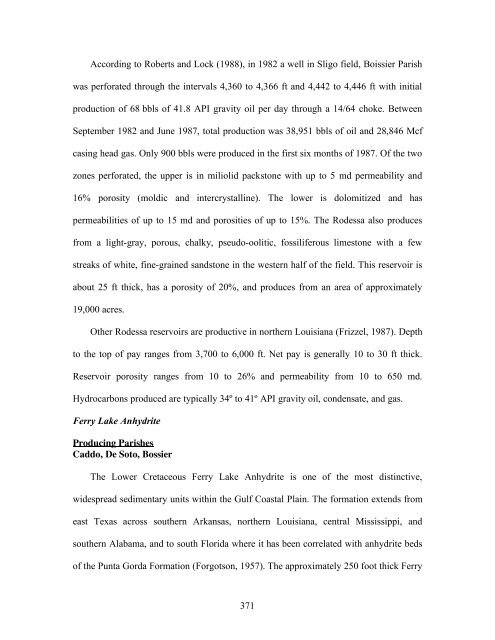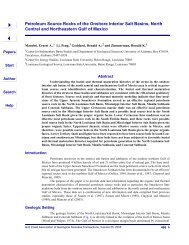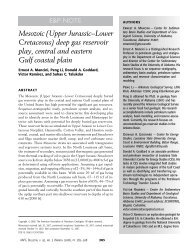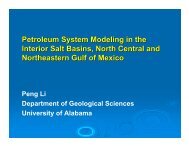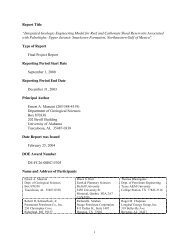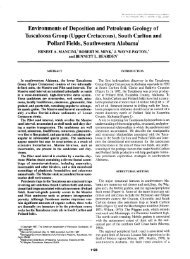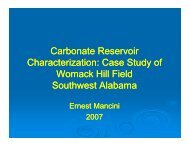Part 4 - Berg - Hughes Center
Part 4 - Berg - Hughes Center
Part 4 - Berg - Hughes Center
You also want an ePaper? Increase the reach of your titles
YUMPU automatically turns print PDFs into web optimized ePapers that Google loves.
According to Roberts and Lock (1988), in 1982 a well in Sligo field, Boissier Parish<br />
was perforated through the intervals 4,360 to 4,366 ft and 4,442 to 4,446 ft with initial<br />
production of 68 bbls of 41.8 API gravity oil per day through a 14/64 choke. Between<br />
September 1982 and June 1987, total production was 38,951 bbls of oil and 28,846 Mcf<br />
casing head gas. Only 900 bbls were produced in the first six months of 1987. Of the two<br />
zones perforated, the upper is in miliolid packstone with up to 5 md permeability and<br />
16% porosity (moldic and intercrystalline). The lower is dolomitized and has<br />
permeabilities of up to 15 md and porosities of up to 15%. The Rodessa also produces<br />
from a light-gray, porous, chalky, pseudo-oolitic, fossiliferous limestone with a few<br />
streaks of white, fine-grained sandstone in the western half of the field. This reservoir is<br />
about 25 ft thick, has a porosity of 20%, and produces from an area of approximately<br />
19,000 acres.<br />
Other Rodessa reservoirs are productive in northern Louisiana (Frizzel, 1987). Depth<br />
to the top of pay ranges from 3,700 to 6,000 ft. Net pay is generally 10 to 30 ft thick.<br />
Reservoir porosity ranges from 10 to 26% and permeability from 10 to 650 md.<br />
Hydrocarbons produced are typically 34º to 41º API gravity oil, condensate, and gas.<br />
Ferry Lake Anhydrite<br />
Producing Parishes<br />
Caddo, De Soto, Bossier<br />
The Lower Cretaceous Ferry Lake Anhydrite is one of the most distinctive,<br />
widespread sedimentary units within the Gulf Coastal Plain. The formation extends from<br />
east Texas across southern Arkansas, northern Louisiana, central Mississippi, and<br />
southern Alabama, and to south Florida where it has been correlated with anhydrite beds<br />
of the Punta Gorda Formation (Forgotson, 1957). The approximately 250 foot thick Ferry<br />
371


